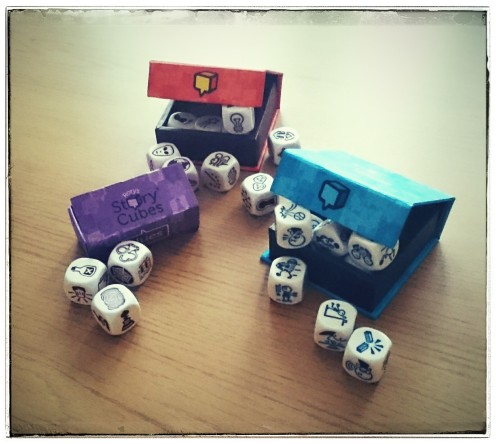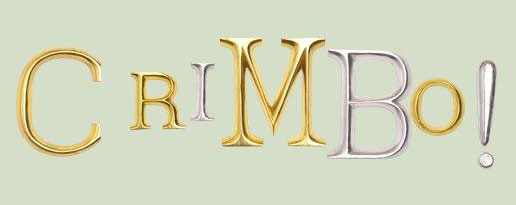As you probably have noticed, I really like including games into my lesson plans. Storytelling is by far my favourite activity, especially with teenagers, as it boosts their creativity and vocabulary, and usually is great fun. It also works well with the adults, you can use the game to help them mingle and chat.
We’ve had fun with DixIt, with Once Upon a Time, but at the moment my most favourite storytelling tool is called the Story Cubes. It may look like a simple set of dice with random pictures on them, but it’s in fact a real vocabulary booster. Basically, the idea behind the game is to make stories based on a dice roll. Obviously, that makes it perfect both for speaking and for writing exercises. However, the pictures are so ambiguous that players are forced to interpret them – and look for new words and phrases.
I bought the basic set of cubes this summer, but soon after that I got Actions and Clues (my students are keen on murder mysteries). Since then I’ve used the sets for improvised speaking exercises (work in groups, roll a few dice and use them in your story… in 5 minutes) or writing compositions (Write a story inspired by Doctor Who, using the Story Cubes – that’s something my upper-int group had on their test yesterday).
Ever since I brought the Story Cubes to my classroom I’ve found them perfect for activities at all ages and levels. Storytelling is just one idea – I can use the dice as yet another Magic Box of Words, making students describe or define the pictures. They may be a perfect warm-up or cool-down: the students are to write three sentences with one word they learnt during the lesson + one rolled on a die.
I use Story Cubes to make my students speak – they create a story in smaller groups or altogether, where each student rolls a die and continues the story (like a string, which Gretatt mentioned in a comment below). It tends to get slightly chaotic, but it’s much fun – and it works for pre-intermediate students as well!
They are also really useful when it comes to creative writing (something which usually takes a while to love, but once my students get a hang of it, they fall in love with this activity). I give them the beginning of the story (They told me not to go out when it’s so cold…) and ask them to continue the story using the cubes as the inspiration. They may work individually or in groups, and they really enjoy it 🙂
You can visit the Story Cubes website and check different sets of dice (this year they introduced Intergalactic, Score and Medic, awesome! I want to mix Clues and Medic, my students will love it!), but be sure to visit their blog with awesome stories and tips focused on games – and especially on storytelling!

